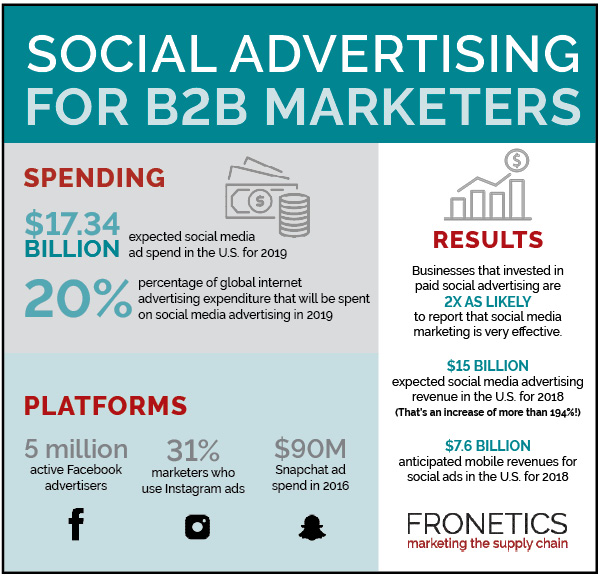Supply chain and logistics marketers need to incorporate social advertising into their content market strategy (and budget) to stay on top of marketing’s biggest driver.
The way audiences use social media channels is constantly changing. As marketers, we need to make sure we’re adapting to these changes. One of the biggest changes we’ve seen so far in 2018 is the increased use of social advertising.
Social advertising is a paid form of paid digital advertising on social media platforms. For example, the advertising platforms provided by Google, Twitter, and Facebook involve “targeting and presenting ads based on relationships articulated on those same services.” Oftentimes, social advertising is one part of a larger marketing strategy.
Sounds easy enough to implement, right? Well, there are so many options and so many more users. If you’re taking the time and money to invest in social advertising, you need to ensure that you’re using the right platforms and getting in front of your target audiences.
[bctt tweet=”With over 3.5 billion internet users worldwide, it’s easy to see the reach ads on social media platforms can have. Facebook alone has over 2 billion daily active users. 2 billion! ” username=”Fronetics”]
In Social Media Examiner’s new report, it’s hard to dispute that social advertising is anything but powerful. With over 3.5 billion internet users worldwide, it’s easy to see the reach ads on social media platforms can have. Facebook alone has over 2 billion daily active users. 2 billion! That’s a lot of opportunities for distributing your content and gaining new followers.
Here are some powerful statistics to prove the weight of social advertising and why it’s worth your time and pennies.
Infographic: A look at social advertising for B2B marketers
Key takeaway
For the first time in years, Social Media Examiner’s report revealed that marketers are more focused on lead generation than cultivating a loyal fan base. What does this mean for you? The focus has shifted from engagement to metrics and automation.
As marketers, we need to watch for increased use of chatbots and other marketing automation tools that can help supply chain marketers become more efficient and more successful in earning and converting leads.
Related posts:
- Increase Leads by 451% through Marketing Automation
- Emerging Trends in Automation: What it Means to Supply Chains
- Content Marketing Trends for 2018 Supply Chain & Logistics Marketers Need to Know



